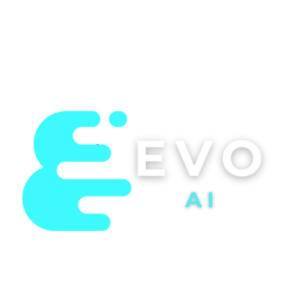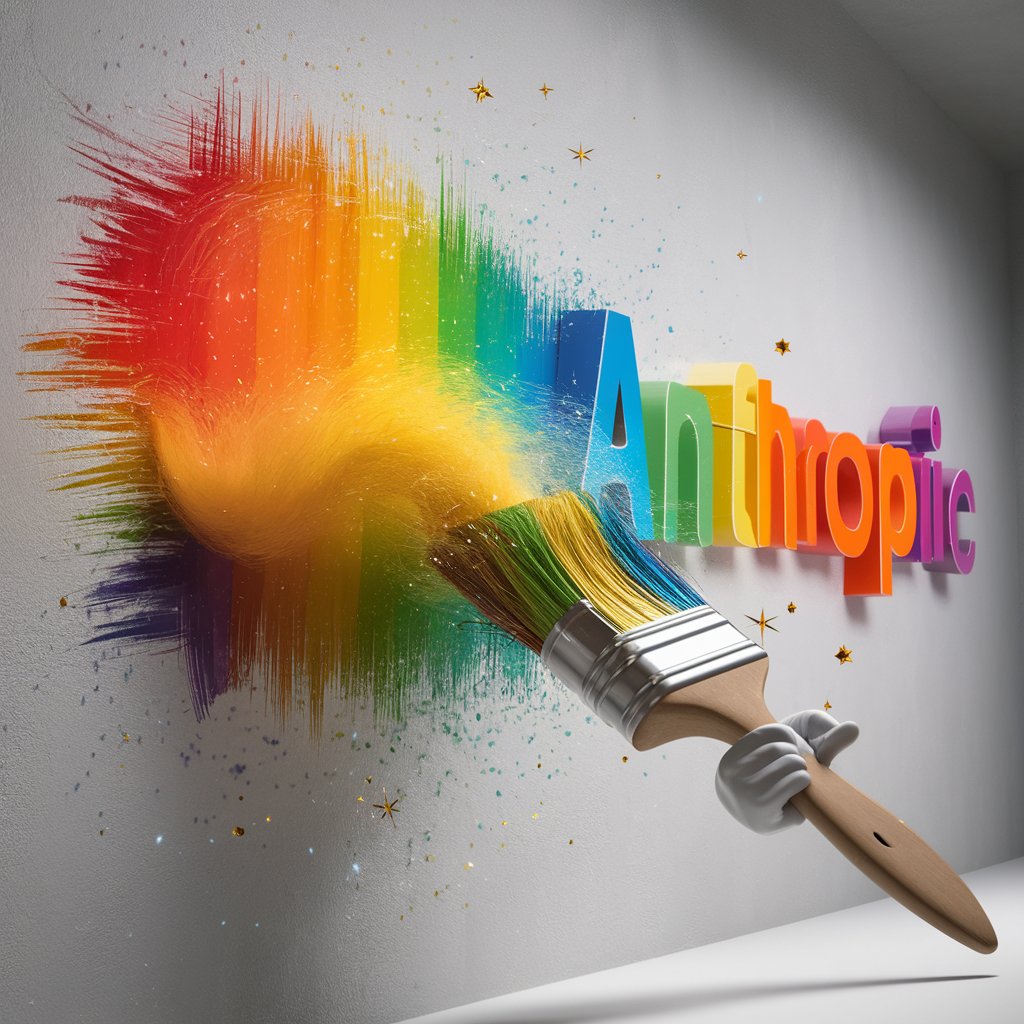
OpenAI releases ChatGPT4o – their new flagship multi-modal large language model
Introduction
OpenAI’s GPT-4o, where “o” stands for “omni,” is the latest iteration in their flagship series of large language models. GPT-4o is designed to handle multimodal inputs and outputs, encompassing text, audio, image, and video. This new model significantly enhances capabilities while being more efficient and cost-effective compared to its predecessors.
Features
- Multimodal Processing: GPT-4o can process inputs in text, audio, image, and video formats and generate outputs in text, audio, and image formats.
- Real-Time Performance: Achieves low-latency responses, particularly in voice interactions, with response times as fast as 232 milliseconds.
- Enhanced Multilingual Support: Improved tokenization efficiency across 20 languages, significantly reducing the number of tokens needed for various languages.
- Cost and Efficiency: 50% cheaper and twice as fast as GPT-4 Turbo, with a context window of 128k tokens.
Benefits
- Natural Interaction: Facilitates seamless, real-time interactions across multiple modalities, enhancing user experience in applications like customer support and interactive AI assistants.
- Cost-Effective Solutions: Reduces operational costs while maintaining high performance, making advanced AI accessible to a broader audience.
- Versatility and Accessibility: Suitable for a wide range of applications, from content creation and data analysis to education and customer engagement.
Technical Details
- Unified Model Architecture: Integrates capabilities for text, vision, and audio processing within a single model, streamlining AI operations.
- Training Data: Trained on a comprehensive dataset of 3.5 trillion tokens, ensuring robust performance across various tasks.
- API and Integration: Available via OpenAI’s API, supporting text and vision processing, with plans to extend audio and video capabilities. The model supports function calling and JSON mode for enhanced utility.
Use Cases
- Customer Service: Enables real-time, multimodal support, improving customer satisfaction and operational efficiency.
- Content Creation: Facilitates the creation of rich multimedia content, automating tasks like video transcription and image generation.
- Education and Training: Enhances educational tools with real-time language translation, interactive learning experiences, and personalized tutoring.
Conclusion
GPT-4o marks a significant advancement in the field of AI, combining state-of-the-art multimodal capabilities with exceptional performance and cost efficiency. By making these advanced tools more accessible, OpenAI continues to drive innovation and democratize the benefits of AI technology across various industries.

Technology Innovation Institute (TII) releases Falcon 2 11B, the most advanced LLM in the series
Introduction
The Technology Innovation Institute (TII) in Abu Dhabi has unveiled Falcon 2, their latest and most advanced large language model (LLM) series. This release includes two innovative versions designed to enhance AI capabilities in both language and vision processing.
Features
- Falcon 2 11B: An efficient and accessible language model with 11 billion parameters, trained on 5.5 trillion tokens. This model is optimized for a wide range of natural language processing tasks.
- Falcon 2 11B VLM: A Vision-to-Language Model (VLM) with 11 billion parameters, capable of converting visual inputs into textual outputs. This model stands out as TII’s first multimodal model and the only one in the top-tier market with image-to-text conversion capabilities.
Benefits
- Multimodal Capabilities: Falcon 2 11B VLM supports seamless conversion of images to text, making it suitable for applications requiring visual interpretation and description.
- Multilingual Support: Both models can handle tasks in multiple languages, including English, French, Spanish, German, and Portuguese.
- High Performance: Falcon 2 11B surpasses Meta’s Llama 3 with 8 billion parameters and performs on par with Google’s Gemma 7B, achieving impressive scores in evaluations by Hugging Face.
- Open Source: Both models are open-source, providing developers worldwide with unrestricted access and promoting innovation and collaboration.
Technical Details
- Model Variants:
- Falcon 2 11B: 11 billion parameters, trained on 5.5 trillion tokens.
- Falcon 2 11B VLM: 11 billion parameters, equipped with vision-to-language capabilities.
- Training Data: Extensive and diverse dataset, ensuring robust language understanding and high accuracy.
- Efficiency: Models are designed to run efficiently on a single GPU, making them scalable and easy to deploy across various devices, including laptops.
Use Cases
- Content Creation: Automates the generation of text and image descriptions, enhancing productivity in content creation.
- Customer Support: Improves customer service with advanced chatbots capable of understanding and responding to text and visual queries.
- Data Analysis: Assists in analyzing large volumes of textual and visual data, providing insights and aiding decision-making.
- Educational Tools: Enhances interactive learning and personalized tutoring with multilingual and multimodal capabilities.
- Industry Applications: Suitable for healthcare, finance, e-commerce, education, and legal sectors for tasks like document management, digital archiving, and supporting individuals with visual impairments.
What’s Next
TII plans to further enhance Falcon 2 models with advanced machine learning capabilities like ‘Mixture of Experts’ (MoE). This approach will combine smaller, specialized networks to deliver more sophisticated and customized responses, improving accuracy and accelerating decision-making.
Conclusion
Falcon 2 sets a new standard in AI technology, offering advanced language and vision processing capabilities. Its efficient training, versatility, and accessibility make it a valuable tool for researchers, developers, and businesses. By adopting Falcon 2, users can achieve significant improvements in efficiency, cost savings, and innovation across various applications.
Other AI News
-
Ampere and Qualcomm Unite to Launch Advanced AI Server Leveraging ARM Technology
Ampere and Qualcomm have joined forces to launch a new AI server, marking a significant collaboration between two companies primarily known for their ARM-based chips designed for data centers. This partnership aims to combine Ampere’s CPU capabilities with Qualcomm’s Cloud AI100 Ultra AI inferencing chips to create a server specifically optimized for AI tasks. This move underscores a strategic pivot by Qualcomm towards expanding its presence in the data center market, which traditionally has been dominated by its mobile technology endeavors.
The collaboration between Ampere and Qualcomm is particularly noteworthy as it brings together two giants in the ARM architecture space, a sector gaining increasing importance due to its energy efficiency and performance in handling complex computations required for AI workloads. By focusing on AI server solutions, the companies are looking to capitalize on the growing demand for more powerful and efficient data processing architectures in the technology industry, particularly as AI applications continue to expand across various sectors.
-
Trawa Secures €10M to Revolutionize Renewable Energy Procurement for SMEs with AI
Trawa, a Berlin-based startup, has successfully raised €10 million in a seed funding round to advance its AI-driven platform designed to streamline the purchase and management of renewable energy for small and medium-sized enterprises (SMEs). This financial boost, spearheaded by Balderton Capital, brings Trawa’s total capital to over €12 million. The platform not only simplifies the procurement of renewable energy but also offers tailored solutions by incorporating downstream data, which helps businesses understand and optimize their energy usage. By leveraging AI, Trawa can create optimized energy solutions that potentially reduce energy costs by up to 30% annually for its clients.
The investment round also saw participation from other notable entities like German climate tech investor AENU, along with Speedinvest, Magnetic, and TinyVC. Trawa’s innovative approach comes at a critical time, as Europe grapples with soaring electricity prices and an ongoing energy crisis, highlighting the growing importance of sustainable energy solutions for businesses. The company has already secured several industrial customers within the DACH region, demonstrating significant traction and the effectiveness of its AI-powered tools in the renewable energy sector.
-
Chrome 126 to Integrate Google’s Gemini Nano AI for Enhanced In-Browser AI Capabilities
Google has recently announced the integration of its smallest AI model, Gemini Nano, into the Chrome desktop client, beginning with Chrome version 126. This move, revealed at the Google I/O 2024 developer conference, aims to enhance the functionality within Chrome by allowing developers to utilize the on-device AI model to implement their own AI-driven features directly in the browser. Additionally, this integration will bolster existing tools like the “help me write” feature from Google’s Workspace Lab in Gmail, offering improved AI capabilities such as translation, captioning, and text transcription within the browser environment.
Furthermore, Google is enhancing the Chrome DevTools Console with the Gemini Nano model, enabling it to automatically explain errors and offer debugging solutions. This incorporation of AI into Chrome is part of Google’s broader strategy to make AI more accessible and functional across various platforms and devices. The company is also discussing possibilities with other browser vendors to adopt similar integrations, aiming to standardize AI features across the web.
-
Introducing Firebase Genkit: Google’s New Framework for Streamlined AI App Development
Google has recently unveiled Firebase Genkit, a new open-source framework designed to enhance the development of AI-powered applications, announced during the Google I/O 2024 developer conference. This addition to the Firebase platform simplifies the integration of AI capabilities into both new and existing applications, enabling developers to work with JavaScript/TypeScript and soon, Go. Genkit is specifically tailored to facilitate tasks like content generation, text translation, and image generation, making it a versatile tool for developers looking to incorporate AI into their projects.
The framework allows for local testing of new features before they are deployed using Google’s serverless platforms such as Cloud Functions for Firebase and Google Cloud Run. This integration ensures a seamless transition from development to production. Additionally, Genkit is compatible with numerous third-party open-source projects and Google’s own Gemini models, promising a comprehensive development experience that leverages Google’s advanced AI capabilities. The upcoming Project IDX, Google’s next-generation web-based integrated developer environment, will also support Genkit’s developer UI right out of the box.
-
OpenAI Startup Fund adds $5 million to its coffers
The OpenAI Startup Fund has recently bolstered its financial resources by securing an additional $5 million, as detailed in a filing with the U.S. Securities and Exchange Commission. This new funding, contributed by two investors into a specially created vehicle, OpenAI Startup Fund SPV III, L.P., represents the third such initiative to support the fund’s investment activities. Under the new management of Ian Hathaway, following a transition from Sam Altman, the fund continues to focus on early-stage AI companies, demonstrating OpenAI’s ongoing commitment to fostering innovation in the AI sector.
This infusion of capital allows the OpenAI Startup Fund to extend its portfolio, which already includes a diverse array of companies such as Harvey, Ambiance Healthcare, Figure AI, and Ghost Autonomy. The fund operates as a corporate venture capital entity, drawing on external limited partners including Microsoft, to invest in promising AI technologies and startups. This strategy not only underscores OpenAI’s role in shaping the future of AI but also enhances its influence across the tech industry by supporting groundbreaking projects and technologies that could dictate the trajectory of artificial intelligence development.
-
Anthropic Advances into Europe, Eyes New Funding to Fuel Growth
Anthropic, a key player in the generative AI sector and a competitor to OpenAI, is broadening its horizons with a strategic expansion into Europe. This move includes the rollout of its AI assistant, Claude, now available across multiple platforms including its own site, iOS app, and a dedicated business plan, all of which support several European languages like French, German, Italian, and Spanish. This expansion is part of Anthropic’s broader strategy to accelerate growth and enhance its presence in key European markets, where it has also started to establish a new office in Dublin to better serve its growing client base.
In addition to its geographic expansion, Anthropic is actively raising more funds to fuel its growth, building on nearly $8 billion already raised at a valuation of $18.4 billion. Despite facing mixed reviews for its iOS app, the company reports strong growth, particularly in the adoption of its paid subscription services tailored for work and enterprise applications. This expansion and fund-raising effort reflect Anthropic’s commitment to competing in the high-stakes AI industry, emphasizing its focus on creating specialized solutions for the enterprise sector.
-
Google’s LearnLM: Advancing AI in Education with New Challenges
Google has introduced a new suite of AI models named LearnLM, specifically designed to enhance educational experiences across its platforms. This innovative family of models, developed through a collaboration between Google’s DeepMind and Google Research, aims to provide conversational tutoring on a wide range of subjects. Already integrated into various Google products like YouTube, Google Search, and Google Classroom, LearnLM supports educational tools that assist with everything from solving math problems on Android to engaging with educational content on YouTube.
However, LearnLM is not without its challenges. According to a technical paper, while the models bring a new dimension to learning, they share some common issues with other generative AI models, such as not always maintaining an encouraging tone and occasionally struggling to recognize correct answers from students. Moreover, LearnLM can sometimes generate inaccurate information in response to queries. These issues highlight the need for cautious implementation and further refinement of the models to ensure they are a beneficial educational tool.
-
Google I/O 2024 Introduces Veo, Pioneering New Realms in AI-Driven Video Production
Google has made a significant advancement in AI-generated video with the debut of Veo at Google I/O 2024. Veo is a new AI model that generates high-definition 1080p video clips up to a minute long from simple text prompts. This model represents a leap forward in video generation technology, allowing for the creation of videos with varied visual and cinematic styles, such as landscapes and time-lapses, and includes capabilities for editing pre-existing footage. Veo is built upon Google’s prior work in the field and is positioned to compete with other leading models like OpenAI’s Sora, as well as offerings from startups like Pika, Runway, and Irreverent Labs.
Despite its advanced capabilities, Veo is still in the experimental stage, showcased by its current limitations like objects inconsistently appearing and disappearing in videos, and occasional physics inaccuracies. To address these issues and refine the model, Veo will initially be available only to a select group of creators and will remain accessible via a waitlist through Google Labs. As Google continues to enhance Veo’s functionality, there are plans to integrate its capabilities more broadly, potentially extending into platforms like YouTube Shorts and other Google products.
-
Recall.ai Secures $10M to Transform Virtual Meeting Data Utilization
Recall.ai, a startup backed by Y Combinator, has successfully raised $10 million in a Series A funding round to enhance its infrastructure and API for managing data from virtual meetings. This funding is aimed at expanding the team and integrating more data sources to advance their services. The company provides a robust solution for accessing raw data from virtual meeting platforms, enabling the development of AI-powered meeting bots and applications. The startup has seen significant growth, increasing its revenue from zero to several million dollars annually and now serves over 300 enterprise customers. This funding round was led by Ridge Ventures with contributions from Industry Ventures and other existing investors.
Recall.ai’s technology allows companies to transform virtual meeting data into actionable insights, streamlining the integration of AI into their workflows. This capability is critical as businesses continue to adapt to remote work environments and seek efficient ways to manage and utilize vast amounts of meeting-generated data. With plans to grow its team significantly, Recall.ai is poised to expand its impact in the market, providing tools that enhance productivity and decision-making processes based on comprehensive data analysis.
-
Senate Proposes Ambitious $32B Annual Investment in AI Development
A Senate working group has proposed a significant increase in federal funding for AI programs, suggesting a minimum of $32 billion annually. This funding is aimed at several key areas to maintain and enhance the U.S.’s competitive edge in the global AI landscape. These areas include infrastructure development, national security risk assessments, cross-government AI research and development, and expansion of the National AI Research Resource. Additionally, the funding would support American AI hardware and software industries, address regulatory gaps in finance and housing, and explore AI applications in healthcare and medical sectors.
However, the report by the Senate working group, which outlines these funding proposals, does not present specific budget allocations and is not expected to lead to immediate legislative action, particularly given its release during an election year. The recommendations are more of a roadmap or guideline for future AI policies and legislation, reflecting the urgent need for comprehensive strategies to integrate AI advancements across various sectors of government and society.
-
Instagram Co-founder Joins Anthropic as Chief Product Officer to Bolster AI Development
Anthropic, an AI technology company, has recently appointed Mike Krieger, the co-founder of Instagram and Artifact, as its first Chief Product Officer (CPO). Krieger will oversee the company’s product engineering, management, and design, with a particular focus on expanding Anthropic’s suite of AI applications and enhancing its generative AI technology, Claude. His role will also encompass the development of the company’s enterprise services and subscription models.
Krieger’s move to Anthropic marks a significant step in his career following his departure from Instagram in 2018 and his recent venture, Artifact, a personalized news app acquired by Yahoo. His experience in building user-friendly platforms at Instagram and his venture into AI-driven news curation at Artifact aligns with Anthropic’s goals to advance and widen the accessibility of its AI technologies. This strategic hire indicates Anthropic’s ambition to compete robustly in the consumer market against other AI giants like OpenAI and Google, who are also intensively upgrading their AI chatbot technologies.
-
Weka Secures $140M to Enhance AI-Driven Data Management Solutions
Weka, a company that provides a platform for building data pipelines, has successfully raised $140 million in a Series E funding round. This significant financial boost has doubled the company’s valuation to $1.6 billion. The funding round was led by Valor Equity Partners and saw participation from several prominent investors including Nvidia, Norwest Venture Partners, Micron Ventures, Qualcomm Ventures, and Hitachi Ventures. Weka’s technology specializes in managing complex data across multiple locations, making it an essential tool for companies heavily invested in AI and machine learning.
The company was initially founded by ex-IBM employees and has since established itself as a strong competitor against other major data management platforms like DataDirect, Pure Storage, NetApp, and Vast Data. Weka boasts a client list that includes over 300 brands, such as AI startup Stability AI and several Fortune 50 companies, and even some undisclosed government agencies. With the new funding, CEO Liran Zvibel is optimistic about achieving cash flow positivity by the end of 2024, driven by favorable market conditions and strong investor confidence.
-
LanceDB Innovates Multimodal AI Databases with Major Seed Funding
SolutionsLanceDB, a newly emerged company co-founded by Chang She, former VP of Engineering at Tubi and co-creator of the Python data science library Pandas, is making strides in the AI industry by focusing on multimodal AI databases. The company’s platform is designed to manage vast arrays of data, including billions of vectors and petabytes of text, images, and videos, which is particularly suited to the needs of AI applications that require handling various types of data simultaneously.
The significance of LanceDB in the tech landscape is highlighted by its ability to support complex data management tasks essential for AI development, aiming to simplify and enhance the infrastructure for AI teams. This move is critical as it addresses common bottlenecks in traditional data infrastructures that can hinder AI model development and deployment. With $11 million already raised in seed funding and backed by prominent investors like CRV, Essence VC, and Swift Ventures, LanceDB is positioned to play a pivotal role in advancing AI capabilities by providing a robust, scalable solution for multimodal data handling.
-
Slack Faces User Backlash Over Default AI Training Data Policy
Slack has been criticized for its approach to training AI models using user data, sparking concerns about privacy and transparency. The company has been using data from its platform to train various AI features, including search and emoji recommendations, and has done so with users opted in by default. This policy has led to a backlash from users and privacy advocates who are concerned about the lack of clarity and consent in Slack’s data usage practices.
The controversy highlights broader issues in the tech industry related to user data and AI training, where the balance between improving services and protecting user privacy remains a contentious topic. Slack maintains that customer data belongs to the customers and that they have the option to exclude their data from being used in this manner, but the default opt-in policy has been particularly contentious.
-
Leadership Shift at OpenAI as Co-Founder Ilya Sutskever Steps Down
Ilya Sutskever, a co-founder and the longtime chief scientist at OpenAI, has departed from the company. His departure marks the end of a significant chapter for OpenAI, where he was a key figure in its development and success. OpenAI CEO Sam Altman expressed deep gratitude for Sutskever’s contributions, describing him as one of the greatest minds of their generation and a guiding light in the field of AI. Sutskever is planning to focus on a new project that he says is personally meaningful to him, though details about this next venture have not yet been disclosed.
Jakub Pachocki, who has been with OpenAI since 2017 and previously led research on the Dota team, will replace Sutskever. This change in leadership comes at a time when OpenAI is continuously evolving, including efforts to enhance the governance of superintelligent AI systems—a project that Sutskever had been deeply involved with. The shift underscores ongoing strategic adjustments within OpenAI as it navigates the complex landscape of AI development and safety.
About The Author

Bogdan Iancu
Bogdan Iancu is a seasoned entrepreneur and strategic leader with over 25 years of experience in diverse industrial and commercial fields. His passion for AI, Machine Learning, and Generative AI is underpinned by a deep understanding of advanced calculus, enabling him to leverage these technologies to drive innovation and growth. As a Non-Executive Director, Bogdan brings a wealth of experience and a unique perspective to the boardroom, contributing to robust strategic decisions. With a proven track record of assisting clients worldwide, Bogdan is committed to harnessing the power of AI to transform businesses and create sustainable growth in the digital age.











Leave A Comment